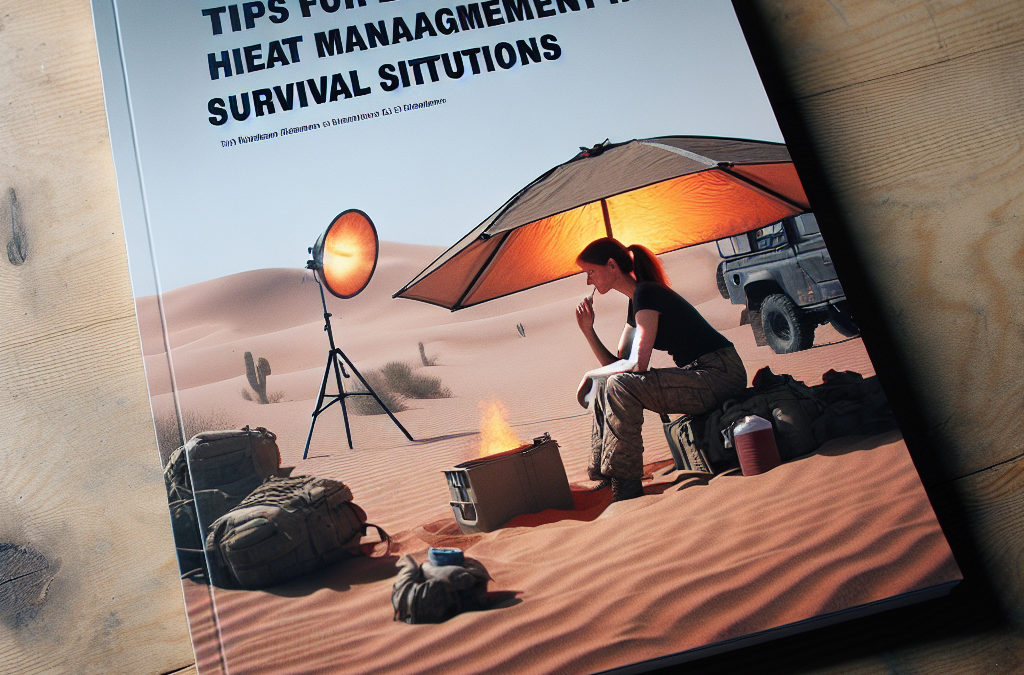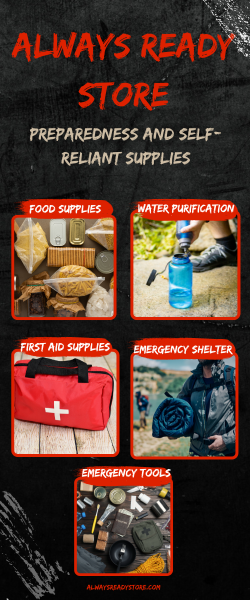When I’m out in the wild, facing the elements, one of the most critical skills I’ve learned is how to manage heat effectively. Whether you’re in a harsh cold or battling the scorching sun, heat management can truly make or break the experience. Having gone through various situations, here are my five key areas of focus that help me outsmart the weather.
Understanding Your Environment
Assessing Temperature Levels
First off, you’ve got to get a handle on the temperature around you. It may sound basic, but trust me, actually stopping to assess the conditions can save your neck. I usually check for the highs and lows during the day, understanding when I might be able to cool off or need extra warmth.
Keep an eye on sunrise and sunset. The sun heats things up, so knowing when it’s at its peak can inform when to take breaks. It’s all about being strategic; if I know the sun’s blazing, I might aim for shelter to stay cool or find a stream to chill by.
Also, look around for natural indicators like wind direction and cloud coverage. These can provide hints about incoming weather changes, giving you a better understanding of how to manage heat effectively.
Recognizing Heat Sources
Next, it’s super important to recognize natural heat sources. Believe me, the sun is not the only player here. Things like campfires or even your own body can create excess heat in an already tough environment.
I once got caught in a situation where I was near a fire, thinking I’d just cozy up. But it turned into a heat management nightmare! I learned to position myself with care regarding any heat sources and to use them wisely.
Thank you for reading this post, don't forget to subscribe NOW for FREE!
Understanding how different surfaces retain heat is key too. For example, rocks can absorb heat during the day, only to release it at night, so being aware of where you sit or sleep can help you regulate your body temperature quite a bit.
Adapting to Changes
Adapting to sudden temperature changes is a skill I’ve honed over the years. Weather can be unpredictable, and you’ve got to have a plan B ready to roll. Dressing in layers has been a game-changer for me; it allows me to adjust my attire as conditions shift.
When it gets warm, I might peel off a layer, but if I’m caught in a chill later, I’m prepared to bundle back up. It’s all about flexibility and having that foresight to think ahead.
Lastly, I always carry items like a lightweight emergency blanket. You never know when you might need to wrap up and stay warm, especially if darkness creeps in unexpectedly!
Clothing Choices Matter
Choosing Appropriate Fabrics
My experience has taught me the true value of fabric choice. Wear lightweight, breathable fabrics when it’s warm, and opt for thick, insulating layers when it gets chilly. Cotton is usually a no-go; it traps moisture and stays wet, which can lead to hypothermia.
Instead, I lean toward quick-drying materials that wick moisture away. Fabrics like merino wool or synthetic blends can keep me comfortable no matter the situation. It really does make a difference!
Don’t forget about UV protection too. I always grab a hat with a wide brim and long sleeves when the sun’s high. Not only does it shield me from UV rays, but it also helps regulate my body temperature.
Layering Strategies
Just like a cake, layering your clothing helps when the temperature dips or soars. I usually start with a moisture-wicking base layer, which acts like a shield against sweat. Over this, I add an insulating mid-layer, often a fleece or down jacket, and finally a waterproof outer layer to battle the wind and rain.
I once went hiking with inadequate layers, and it was a lesson learned the hard way. I transformed into an ice cube at the top of a mountain, shivering and regretting my choices. Now, I always ensure I have options!
This layering system gives me the ultimate control over my body heat, which is vital in survival situations. I can add or remove layers to navigate through varying conditions effectively.
Footwear Considerations
Don’t overlook your feet! Trust me, poor footwear can lead to discomfort, affecting your overall survival strategy. I learned this on a trek where my shoes weren’t up to par; I limped my way back home!
Invest in durable and breathable shoes suited for rough terrain. Good grip is essential too. You’ll want your footwear to keep you grounded in both wet and dry conditions, ensuring that heat management isn’t thrown off.
Also, remember to pack extra pairs of socks. It may seem trivial, but switching out wet socks for dry ones can elevate your comfort level dramatically, helping you avoid blisters and maintaining warmth!
Staying Hydrated
The Importance of Water Intake
Now, hydration is key! Let’s face it; you can’t manage heat if you’re not drinking enough water. At times, I’ve been careless, and it led to fatigue and heat exhaustion. When you’re out there, staying hydrated keeps your body in check.
I always set reminders to drink water regularly. It’s easy to go hours without realizing you need it. Aim for at least half a liter every couple of hours, especially in extreme conditions.
In hot conditions, adding electrolyte tablets to my water has worked wonders. It helps replace lost salts and keeps me feeling energized, ready to tackle whatever comes next.
Recognizing Signs of Dehydration
Learning to recognize the signs of dehydration has been essential. Things like dizziness, dry mouth, or fatigue are red flags that I never ignore. When I notice them, I implement my hydration plan immediately.
It’s vital to listen to your body because getting behind on hydration can spiral fast. Just a couple of hours of neglect could have me battling a headache that ruins my experience.
If you’re sweating buckets, make sure to replenish those fluids and keep a lookout for darker urine. Ideally, I shoot for a light yellow shade, which indicates my hydration level is just right!
Creative Water Sources
When water gets scarce, being resourceful pays off big time. I’ve learned to look for dew in the mornings or even rainwater. Depending on where you’re at, you might find a stream or pond, just keep safety in mind and filter whenever necessary.
A portable water filter can be a lifesaver! On my last hiking trip, I used mine to drink straight from a stream. Nothing feels better than fresh, clean hydration when you really need it!
Yeah, there are times when you’ve got to get a little creative. For instance, I once made a makeshift solar still from a plastic bag and some plants. It was a fun challenge that paid off when I was in a pinch!
Utilizing Natural Shelter
Finding Shade When Necessary
Embracing nature means using what’s around you. I’m a huge fan of finding shade during those blistering hot afternoons. That could mean hiding under trees or even using large boulders to block the sun.
Staying still in the shade allows my body to cool down dramatically. I’ve, unfortunately, underestimated the sun before and wound up sunburned and irritable throughout my trip. Now, I prioritize cool spots regularly.
Using natural structures to shield from the elements adds an extra layer to managing heat. Even positioning my gear to minimize sun exposure can help maintain a cooler environment while I take my breaks.
Windbreaks and Insulation
In colder situations, I’ve had to get creative with windbreaks to retain body heat. Using fallen branches, natural mounds, or even packing my gear around creates a protective barrier against cold breezes. It’s a game-changer!
Building a small shelter can enhance protection from both heat and cold. I learned the basics of building a simple lean-to and, let me tell you, the warmth I kept at night made all the difference.
Emphasizing insulation also plays a vital role. I always keep insulated sleeping pads or emergency blankets in my gear. They reflect the warmth back to me, ensuring that even if it’s cold outside, I’ll stay comfy inside!
Emergency Shelters
Lastly, having an emergency shelter plan is crucial. When stuck in extreme weather, a tarp or bivy sack can save your life. I keep a compact emergency poncho that doubles as a shelter. It’s light, versatile, and comes in clutch when you need it most!
Building a quick shelter can also mitigate heat exposure. It doesn’t have to be fancy; just a fast structure can offer relief. I’ve crafted makeshift shelters from leaves and sturdy branches, and even those come in handy.
Always have a contingency plan. Knowing where to find materials or how to construct a simple structure can make all the difference. The peace of mind that comes with preparation cannot be overstated!
Conclusion
Managing heat in survival situations is all about preparation, knowledge, and a bit of creativity. I hope my personal experiences and tips help guide you on your next outdoor adventure. Whether it’s choosing the right clothing, staying hydrated, or utilizing natural shelter, always remember: your comfort can greatly enhance your survival chances. Stay safe out there!
FAQs
1. What is the most important factor in heat management during survival situations?
The most critical factor is understanding your environment. Knowing the temperature ranges and recognizing heat sources can help you make informed decisions about how to stay comfortable and safe.
2. How can I assess the heat level in my surroundings?
Look for natural indicators like cloud coverage, wind direction, and the position of the sun. Also, be aware of your own body’s reactions to temperature changes as they can provide insight into the conditions around you.
3. Why is hydration crucial in heat management?
Staying hydrated helps regulate your body temperature and prevents fatigue and heat-related illnesses. It’s essential to drink regularly, especially in extreme conditions.
4. What fun materials can I use to create a makeshift shelter?
Fallen branches, leaves, tarps, and even large rocks can all be used to build a simple shelter. Just let your creativity flow while thinking about how to shield yourself effectively!
5. Are there any tips for choosing the right clothing for varying temperatures?
Absolutely! Always choose moisture-wicking and insulating layers. Lightweight and breathable for heat, coupled with warm, thick layers for the cold, will give you the flexibility needed for any situation.






